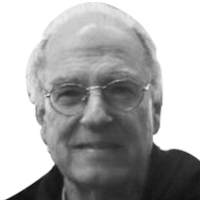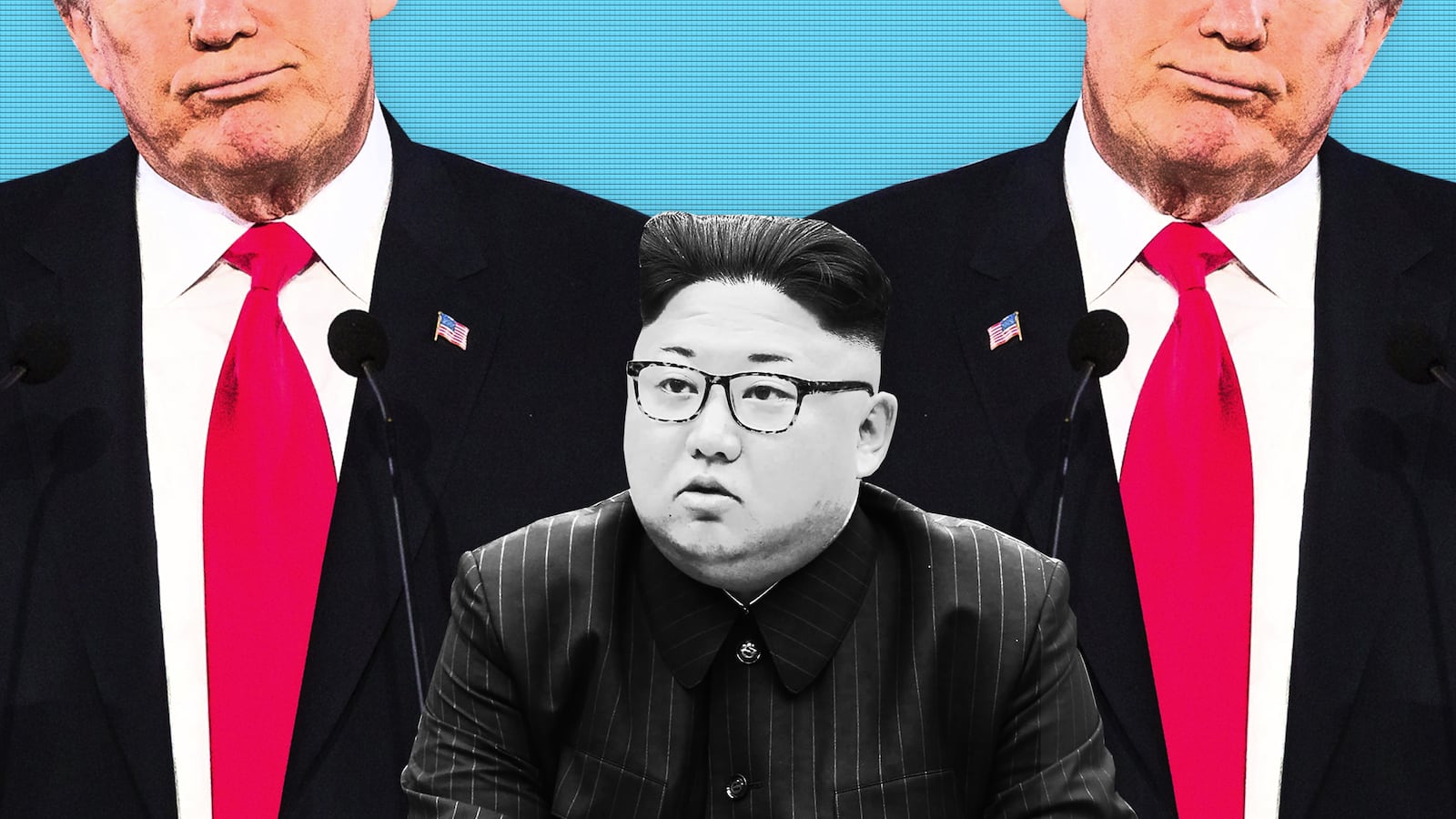SINGAPORE – President Donald Trump’s summit with Kim Jong Un on Tuesday morning may be unique in the annals of U.S. dealings with North Korea, but beyond that it may be hard for either man to convince the skeptics he's scored a terrific success.
Secretary of State Mike Pompeo signaled the doubts and misgivings in a summit-eve press conference where he masterfully hedged all bets while attempting to appear about as optimistic as possible—without getting hopes up so high his boss might look bad if things don’t turn out quite as contemplated.
“North Korea has previously confirmed to us its willingness to denuclearize,” Pompeo said. “President Trump believes the United States has the opportunity to change the trajectory of our relationship.”
Sounds good, but then Pompeo put on a show of firmness, just so no one would think clever Kim might bamboozle Trump.
“The ultimate objective has not changed,” said Pompeo. “Sanctions will remain in place”—that is, until North Korea has “completely” gotten rid of all its weapons of mass destruction, nuclear, biological and chemical.
The more Pompeo talked, the clearer it seemed that U.S. and North Korean negotiators were going right down to the wire trying to get together on details of what might loosely be regarded as an understanding, if not exactly an agreement.
Leading the charge in those unpublicized talks, Sung Kim, former U.S. ambassador to South Korea, went on haggling through the day with Choe Son Hui, North Korea’s assistant foreign minister. He must have gotten to know her better than he would have liked after in dialogue with her for two weeks at the truce village of Panmunjom on the North Korean-South Korean line before coming here to see what they could work out just before the big day.
While Pompeo put the best face on the whole show, Sung Kim and Choe were wonderfully uncommunicative as the media mob besieged them, surrounded them, and briefly blocked their way as they walked out of the Ritz Carlton Hotel 15 minutes apart.
On those talks, more than anything Trump says to Kim, may hang whatever understanding emerges tomorrow. Right now, however, the results of the summit appear highly uncertain.
In fact, it’s not even clear how long the two leaders will meet after sitting down at 9 a.m. in the Capella Hotel on verdant, scenic Santosa Island, a one-time haven for pirates off the main island of this bustling, modern city state.
Kim reportedly intends to take off for Pyongyang in the afternoon aboard the same Air China plane that flew him down Sunday. He could always change his plans. But the betting is that Kim will probably stick pretty much to schedule. The evidence lies in how he spent his one full day here.
While Trump was meeting Singapore Prime Minister Lee Hsieng Loong and Pompeo was taking on the media, Kim was closeted in the St. Regis Hotel. His bodyguards periodically came and went in groups of as many as 20 at a time—young, slender, stern-faced men in black business suits and white shirts—but no one knew where they had been or what they were doing.
Presumably Kim was watching the Pompeo briefing as closely as anyone, but then, as darkness descended, he must have thought he was thoroughly primed for his meeting with Trump. At least he was confident enough suddenly to leave the hotel, surrounded by his retinue, and clamber aboard the limousine that had been shipped from Pyongyang in one of two Russian-built Ilyushin planes.
(The need for his own personal limo was to be expected. But the planes also brought down his own portable toilet to "deny determined sewer divers insights into to the supreme leader's stools," as the South Korean press put it. Spies must not be allowed delicate information about the state of Kim's gut.)
With his mind apparently at ease, Kim's motorcade cruised slowly through city streets on the way to the city’s architecturally beautiful downtown beside a freshwater bay that’s shielded from the harbor where dozens of ships are anchored loading and unloading cargo containers on voyages throughout the region.
It was a tourist trip that Kim had been expected to take all day—but apparently was not ready to begin until he’d absorbed the message from Pompeo and, no doubt, a report from Choe Son Hui on her talks with Sung Kim.
“All preparations for the summit have come together very nicely,” said Pompeo. By tomorrow, with 5,000 members of the media from all over the world on hand for “this historic event,” he said, everyone should know if North Korea “shares this vision” as laid out by Trump, but he also did not expect immediate assent.
“We’re prepared to provide security assurances that are unique,” the secretary went on, parrying a question as to whether the U.S. would consider pulling out some of the 28,500 U.S. troops now on bases in South Korea. As for when and under what conditions those security assurances would be made, “There’s going to be a lot of work left to do,” Pompeo said.
Trump, he claimed, “has laid out a process that’s fundamentally different from what we’ve done before.” What precisely is so different, though, remained a mystery. The key always was and always will be “verification” that the North is doing everything as promised.
Expectations, if not hopes, should reach a crescendo as motorcades carry Kim and Trump across the harbor Tuesday morning to Sentosa Island, where guards have been shielding the Capella Hotel for the past two days, shooing away intrusive journalists and other curiosity seekers.
The hotel sits atop a slight rise well beyond the road, invisible beyond shrubbery and trees. Nearby is Singapore's Universal Studios amusement part featuring a Jurassic Park tour. (“Be immersed in a world of dinosaurs with an all-new live action show.”) Ordinarily it’s Sentosa Island’s main attraction.
North Korea’s promises and commitments remain as remote as the setting in which Trump and Kim will be meeting. All that seemed clear was that Kim knew what he was going to say, how to say it—and how he expects to meet the challenge of an American president who, as we’ve seen recently, has the temper of a T-Rex.






